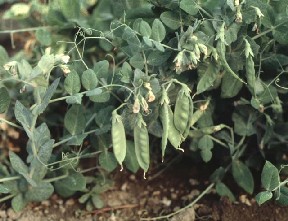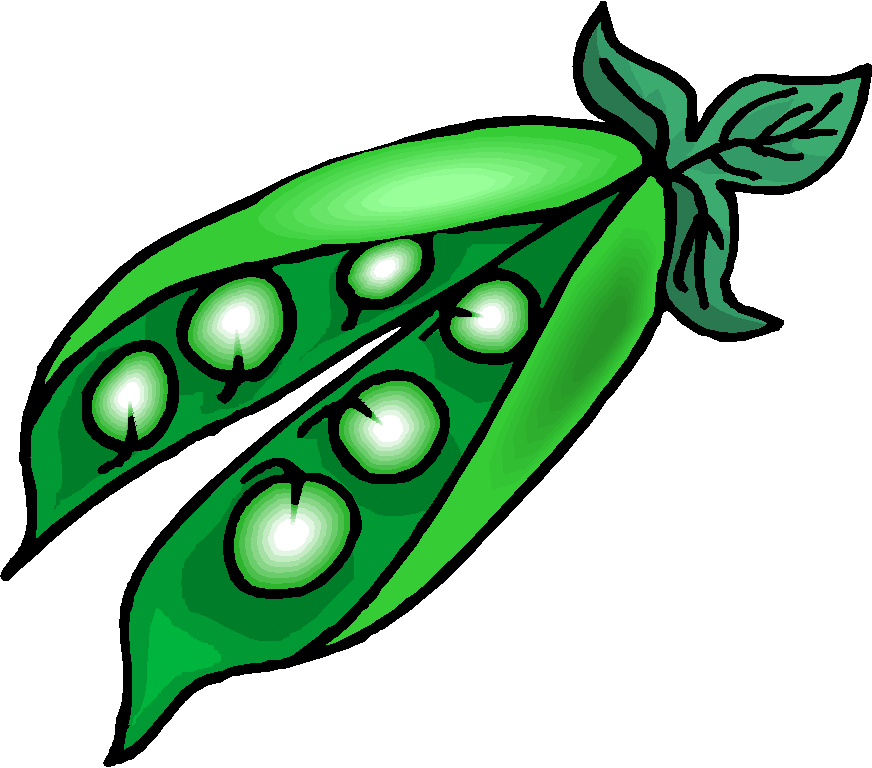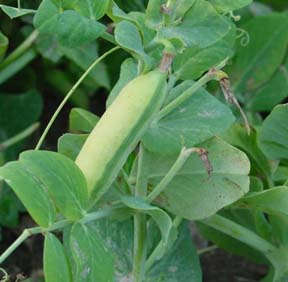Habitat
"Home Is Where The Heart Is"
 P.
sativum
plants live in the temperate regions.
They grow and produce best in regions were the summer's
temperatures are not
too hot; they prefer temperatures of 55-64oF.
Developing best in the spring, cool summers, or the beginning of
fall, peas grow best in sandy-loam soils. Sandy-loam soil is a
combination of sandy soil(consists of large particles which
allows water to move through) and loam soil(absorbs moisture
well). Although
the sandy-loam soil is preferred, garden peas can
grow is many other types of soil. The soil is best when it is
well-drained and contains lime and other necessary organic matter.
If you are interested in learning more about the different soil
types
Check This Out!
P.
sativum
plants live in the temperate regions.
They grow and produce best in regions were the summer's
temperatures are not
too hot; they prefer temperatures of 55-64oF.
Developing best in the spring, cool summers, or the beginning of
fall, peas grow best in sandy-loam soils. Sandy-loam soil is a
combination of sandy soil(consists of large particles which
allows water to move through) and loam soil(absorbs moisture
well). Although
the sandy-loam soil is preferred, garden peas can
grow is many other types of soil. The soil is best when it is
well-drained and contains lime and other necessary organic matter.
If you are interested in learning more about the different soil
types
Check This Out!
They are native to the eastern Mediterranean areas. Growing from
the regions of
Below is a map showing the Middle Eastern countries, which are the sites in which the first plants and crops of Pisum sativum are believed to be cultivated. Although these plants initially grew in rocky soil, when they moved to other soil types specific adaptations allow these plants to grow. If you want to learn more about some of the adaptation and the life of a pea check this out!
Nutrition

Dinner time... come and get it!!
Being consumed as a delicious snack is how we can gain nutrition from these little pods. The plant however requires photosynthesis to convert the water and carbon dioxide into sugars and oxygen, with the help of sunlight. The equation for photosynthesis is as follows:
sunlight
6H2O + 6CO2 --> C6H12O6 + 6O2
The wall of the pods of Pisum sativum contains two separate layers that are involved in photosynthesis. The outer most layer is used to collect the CO2 from the atmosphere and the inner most layer is used to collect any CO2 given off from the developing seeds inside the pod. Once the sugars are formed they will need to be transported throughout the plant. Plants use a vascular system comprised of phloem and xylem. The phloem is used to transport the necessary sugars and nutrients created and obtained. The xylem is a system used to transport the needed water to the cells. Plant cells can contain a vacuole, which is used to hold and store water. The sugars that are made within the cell are stored as starch.
 These
plants also require the conversion of nitrogen in order to
survive. Pisum sativum has developed a relationship
with different bacteria and fungus to get the needed nitrogen.
Without these organisms,
Pisum sativum would not be able to survive as well. This
plant has developed a dependency on the bacteria/fungus to aid
in the uptake and fixing of not only nitrogen but other
nutrients as well. To see more adaptations
Check This Out!
These
plants also require the conversion of nitrogen in order to
survive. Pisum sativum has developed a relationship
with different bacteria and fungus to get the needed nitrogen.
Without these organisms,
Pisum sativum would not be able to survive as well. This
plant has developed a dependency on the bacteria/fungus to aid
in the uptake and fixing of not only nitrogen but other
nutrients as well. To see more adaptations
Check This Out!

